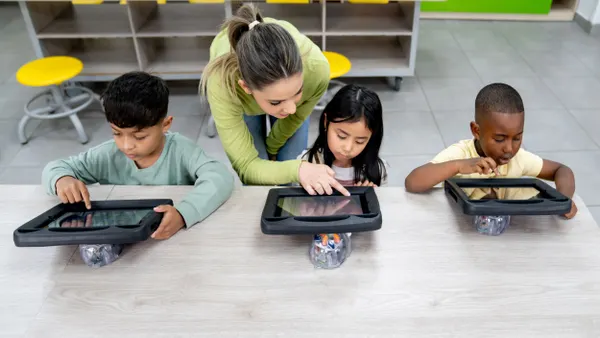Dive Brief:
- The maker movement has created a new strategy to engage students in STEM projects, and educators are finding it can also contribute to strategies for improving language proficiency among English learners.
- EdSource reports some schools are encouraging English learners to speak in full sentences with their peers as they problem-solve and asking them to journal about their experiences to expand the literacy lesson.
- Makerspaces are broadly seen as a way to engage students who are otherwise disconnected from traditional classroom lessons, and English learners prove no different – students who feel like language barriers keep them from being successful in other classes can find their strengths via the hands-on opportunities making provides.
Dive Insight:
Many of the more promising educational strategies of recent years lie in fitting important learning opportunities into experiences students can find interesting and engaging. Project-based learning takes a similar path. Students dive deep into certain topics that (hopefully) interest them, honing their skills along the way in communication, perseverance, research and collaboration. For example, a physics-based algebra course developed by Bob Goodman during his time as a teacher at the Bergen County Technical School in New Jersey aims to improve students’ math literacy through hands-on physics experiments.
For English learners, a growing population in U.S. schools, these hands-on opportunities can reinforce the intelligence students have, even if they struggle with the English language. It is important that schools and districts get creative in finding these opportunities. Once students are inspired, their language learning can speed up.












